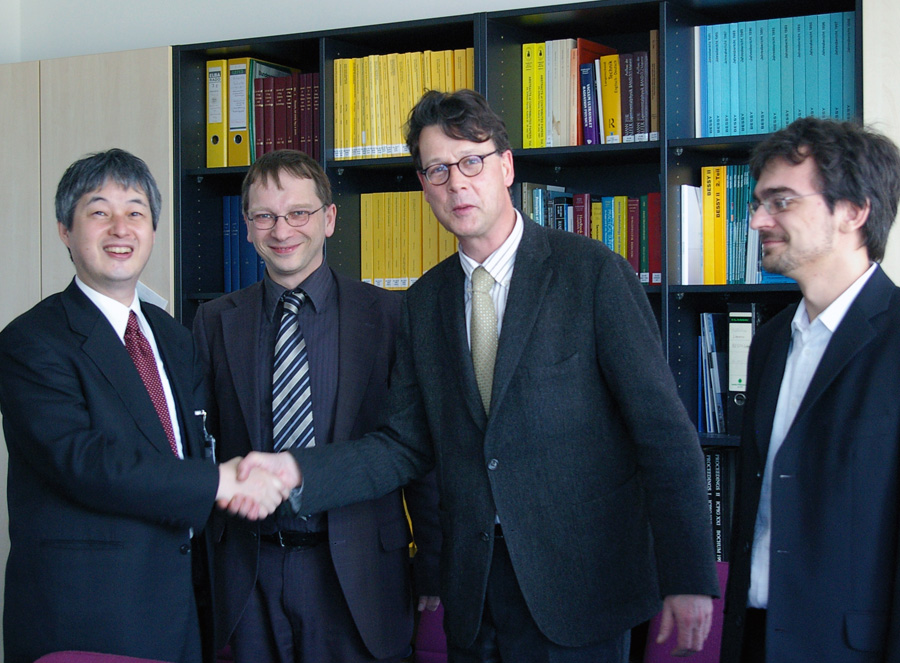Professor K. Tsuji (
March 2009 Archives
Our lab signed a Memorandum of Understanding for research collaboration on X-ray spectrometry and advanced metrology using synchrotron radiation with the Physikalisch-Technische Bundesanstalt (PTB), Germany. The two institutions agreed to promote exchanges of researchers, information, publication of results of the research, and implementation of cooperative research. PTB has several dedicated beamlines at BESSY, Germany's 3rd generation synchrotron radiation facility, and also owns a compact storage ring for photon metrology. Both sides understand the significance of advanced metrology with X-rays for advanced future sciences.

From right to left: Mr. Matthias Muller (PTB, Ph.D. student, X-ray Spectrometry group), Prof. Mathias Richter (PTB, Head of Department, X-ray Metrology using Synchrotron Radiation), Dr. Burkhard Beckhoff (PTB, Head of X-Ray Spectrometry group), Dr. Kenji Sakurai (NIMS, Group Leader, Quantum Beam Center).
At the Photon Factory, KEK,
Tomoya Arai, a renowned specialist in X-ray fluorescence spectroscopy and an adviser to Rigaku Corporation, has died at the age of 77 in
Dr. A. von Bohlen (Institute for Analytical Sciences,
A research team from the
The Chemical Heritage Foundation (CHF) has announced that Dr. Alfred Bader (Cofounder of Aldrich Chemical Company, former chairman of Sigma-Aldrich Corporation) has received the 2009 annual Pittcon Heritage Award. Jointly sponsored by the Pittsburgh Conference on Analytical Chemistry and Applied Spectroscopy (Pittcon) and CHF, this award recognizes outstanding individuals whose entrepreneurial careers have shaped the instrumentation community, inspired achievement, promoted public understanding of the modern instrumentation sciences, and highlighted the role of analytical chemistry in world economies. Dr. Bader founded the Aldrich Chemical Company, a fine chemicals company that later would become the Sigma-Aldrich Corporation, the 80th largest chemical company in the
At the Shanghai Synchrotron Radiation Facility (SSRF) in





